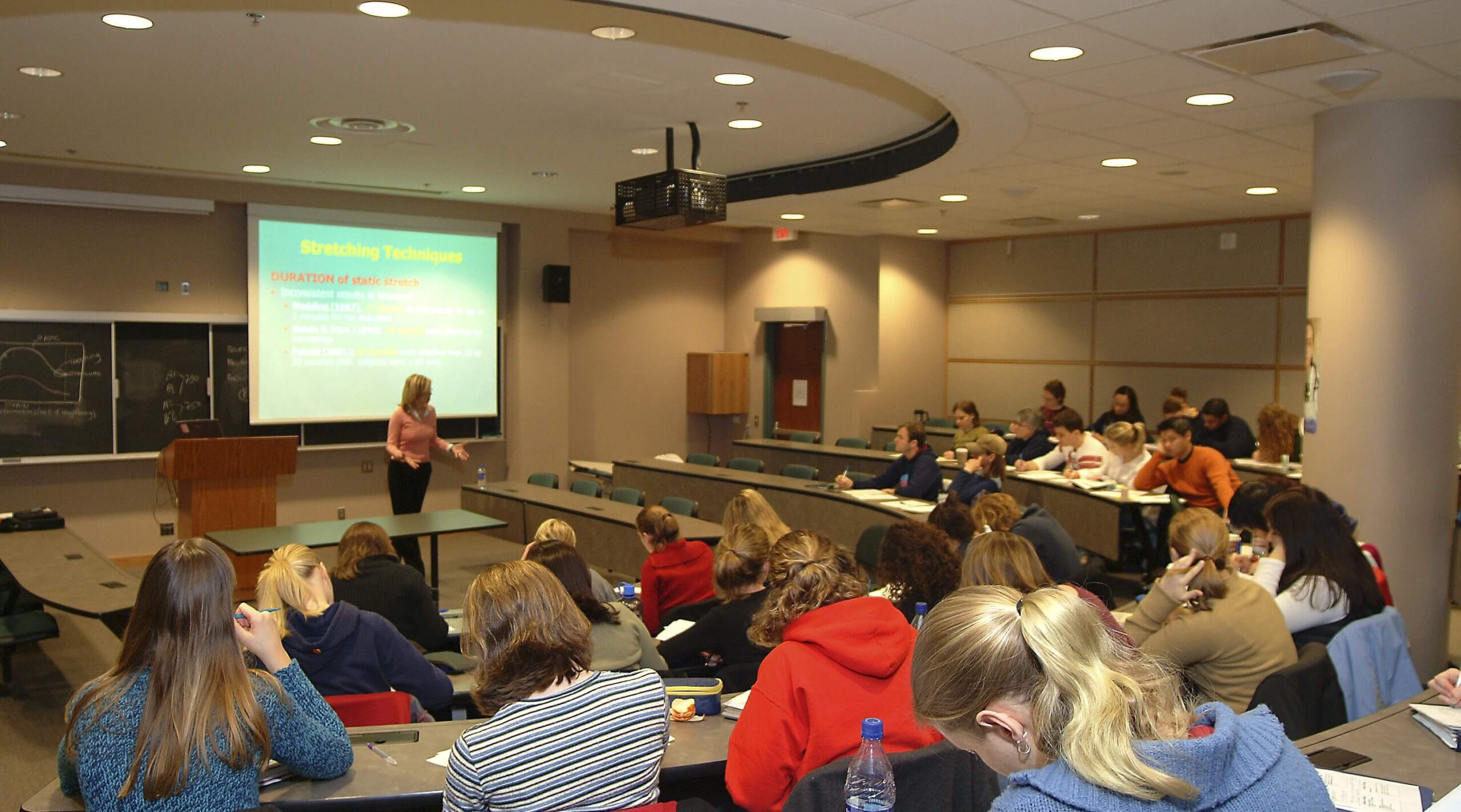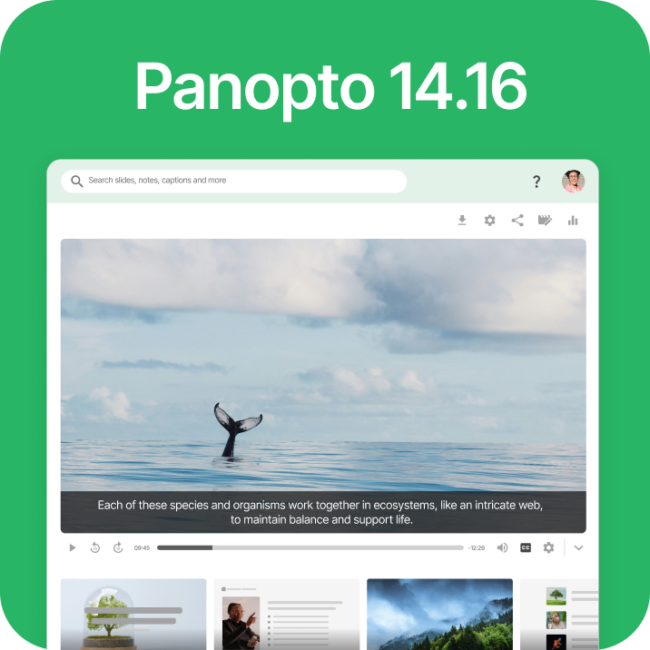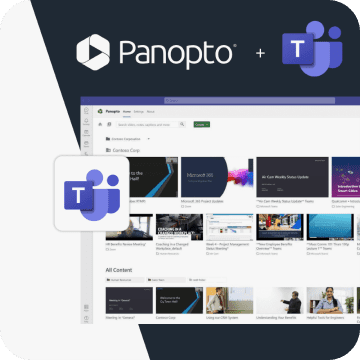- Education
The Lecture of Tomorrow: Moving Beyond the 60-Minute Lecture

We’re all familiar with the traditional lecture from years ago. A professor walked into the classroom, stood up in front of an audience of students, perhaps at a lectern or in front of a white board, and proceeded to instruct—talking to the students and presenting information for a full 60-minute class time.
But that’s dramatically changed in the past two years. Thanks to the rapid expansion and adoption of in-classroom technology and user-friendly digital tools, the traditional 60-minute lecture has radically evolved. Professors now use these new tools to capitalize on the benefits of virtual learning, make in-classroom learning more interactive, and more deeply engage students both in and out of the classroom.
The evolution of teaching and learning
There is still a place for a traditional lecture from time to time. But teaching and learning models have evolved. The traditional stand-up-in-front-of-the-room “sage on a stage” lecture is no longer the only way.
The increased use of lecture recordings, flipped classrooms, and interactive technologies began long before the COVID-19 outbreak. Yet the rapid deployment of easy-to-use audio and video hardware and software has transformed the learning landscape. Faculty have new tools that enable them to improve learning outcomes, and students have new expectations for how they learn.
While virtual, hybrid, and asynchronous forms of teaching and learning were forced upon instructors with no warning in 2020, instructors have now discovered that there are new, complementary ways to engage students beyond the basic stand-up-and-deliver 60-minute lecture.
We now see courses that include asynchronous learning opportunities, video content, interactive elements like polling, quizzes, and video assignments, and virtual experiences that digitally connect students with guest speakers and expanded locations. In many cases, these methods are paired with highly interactive and collaborative group activities when students do gather in person. These methods move beyond the traditional 60-minute lecture to reach students where they are and engage them more deeply.
Why the traditional lecture is no longer the most effective way of teaching
There are a number of reasons the traditional lecture is no longer the most effective method of instruction.
- It’s not flexible for the era of remote and hybrid learning. We’ve moved into a time in which schools—including administration, instructors, and students—must be ready and able to adapt to preserve the continuity of education when in-person instruction is interrupted.
- It’s not what Gen Z wants out of school, or how they learn best. This generation of learners is tech-savvy, mobile-dependent, committed to work and family responsibilities, and eager to fully participate in their education. If they are ill for four days (forget about COVID-19, we’re talking about “dorm cough”), students now typically expect to be able to join class remotely or watch asynchronous video to catch up on what they missed. Moreover, it’s well known that people forget as much as 70% of new information within 24 hours, a challenge that can be overcome by micro-learning, or breaking the curriculum into smaller pieces. Student senates and groups are speaking up for virtual options that better serve these needs.
- It’s not highly accessible. Whether it’s due to illness, inclement weather, or job or family obligations, it’s not always possible for students (or in rare cases, the instructor) to attend class in-person. Other ways of teaching and learning need to be available so all students have access to their education.
- It doesn’t use modern technology to go deeper. We live in a time in which technology gives us opportunities to go deeper with education and make new connections in new mediums. Traditional lectures are limited to one-way communication and to the bounds of the physical classroom. Video technology, on the other hand, draws students into the topic with interactive elements and moves beyond the classroom to connect students to new information, visuals, people, and places.
- Many people learn by participating, not just by listening. Traditional lectures only appeal to a specific type of learning style. In today’s classrooms, there are students who are more visual or social learners, have learning disabilities or certain medical conditions, or don’t use English as their primary language. For these students, listening to a professor talk may not be the most effective way to absorb and understand information. Providing different options allows students to learn in a way that aligns with their needs.
- Content is everywhere. People can now access scholarly lectures on Youtube, podcasts, and other sources for free. Even though some schools offer access to groundbreaking researchers whose content cannot be replicated on these channels, many students may not realize that. To stay relevant and provide value, schools need to set themselves apart from these information sources and offer opportunities to go deeper.
How schools moved beyond the 60-minute lecture—and where the lecture of tomorrow is going
This movement away from the traditional lecture has already started. While the pandemic caused an acceleration in this shift, the evolution continues. Educators and students have experienced the power of more flexible, accessible, and equitable ways of teaching and learning. And there’s no going back.
We now see flipped classrooms becoming the norm for many courses. Instructors and students have experienced the powerful impact of using valuable class time for discussion and interactive activities, rather than for a traditional lecture. Now, students view video content to learn new material outside of the classroom and then participate in a discussion or interactive project during class time. This model makes the most of the class’s time together and provides the opportunity to reinforce concepts in a deeply engaging way.
Instructors have built new models by blending asynchronous learning, video content, interactive elements, and virtual experiences—with the occasional lecture-style instruction. They are providing students with different options for learning and reviewing material, as well as for submitting assignments, testing, and evaluation. Students, for example, can submit a video reflection instead of a short essay, or demonstrate their mastery of a concept interactively rather than a written test. This expansion is especially helpful for skills-based learning where visual demonstrations, real-life examples, and clinical or practical evaluations are necessary.
While these instances highlight creative ways of teaching and learning, they are not rare. Rather, they are becoming the new normal—the baseline for effectively engaging students. This shift is happening now, so if your school is not evolving along with it, you may already be behind.
The traditional lecture is no longer the primary method of teaching and engaging students. Educators have new ways to instruct and connect with students, to deepen their engagement and broaden their perspectives. Professors are moving beyond the 60-minute lecture and evolving the educational experience to be more accessible, relevant, and engaging.
Try Panopto to see how easy it is to create video lectures


